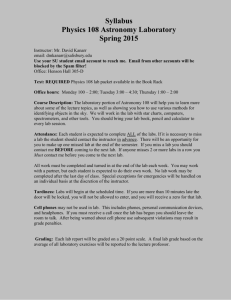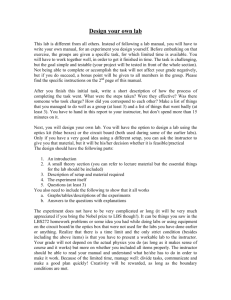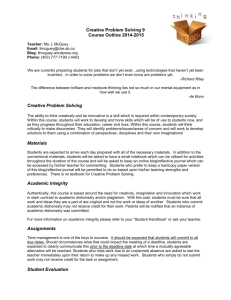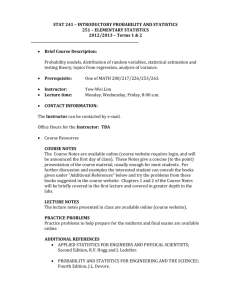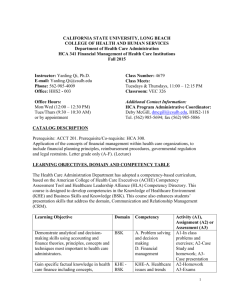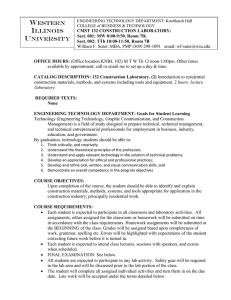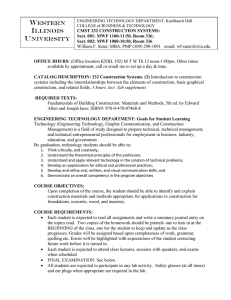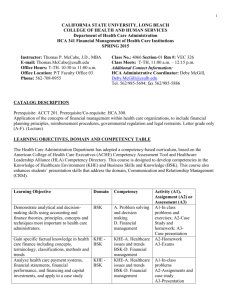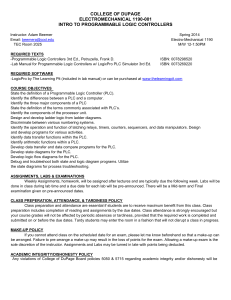Syllabus - California State University, Long Beach
advertisement
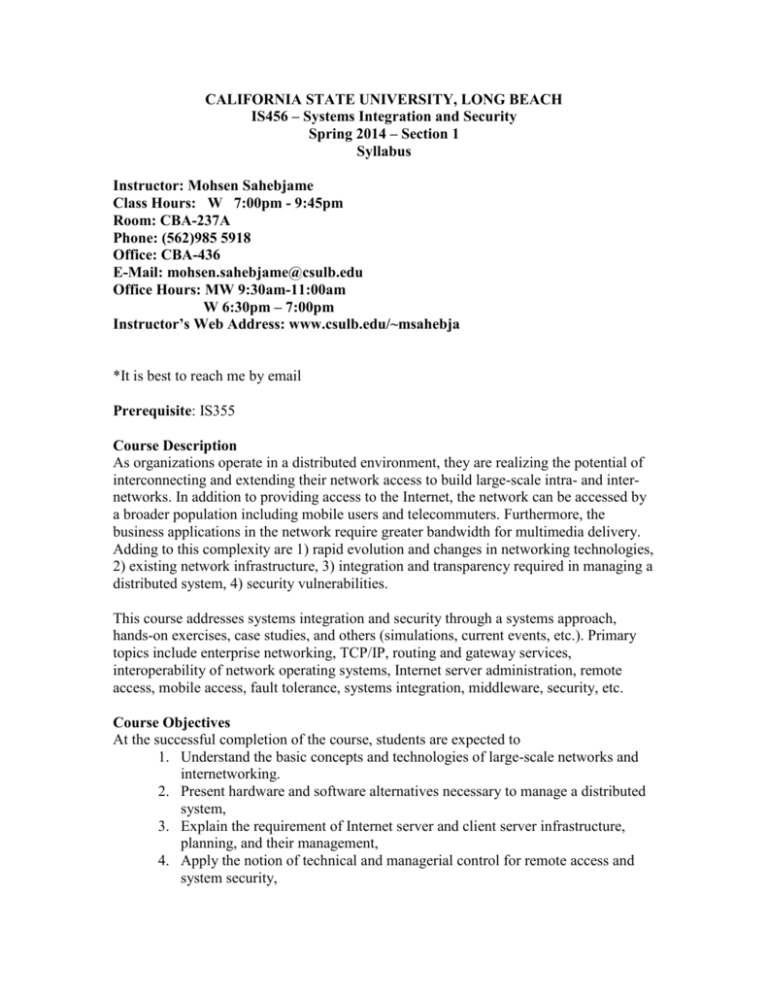
CALIFORNIA STATE UNIVERSITY, LONG BEACH IS456 – Systems Integration and Security Spring 2014 – Section 1 Syllabus Instructor: Mohsen Sahebjame Class Hours: W 7:00pm - 9:45pm Room: CBA-237A Phone: (562)985 5918 Office: CBA-436 E-Mail: mohsen.sahebjame@csulb.edu Office Hours: MW 9:30am-11:00am W 6:30pm – 7:00pm Instructor’s Web Address: www.csulb.edu/~msahebja *It is best to reach me by email Prerequisite: IS355 Course Description As organizations operate in a distributed environment, they are realizing the potential of interconnecting and extending their network access to build large-scale intra- and internetworks. In addition to providing access to the Internet, the network can be accessed by a broader population including mobile users and telecommuters. Furthermore, the business applications in the network require greater bandwidth for multimedia delivery. Adding to this complexity are 1) rapid evolution and changes in networking technologies, 2) existing network infrastructure, 3) integration and transparency required in managing a distributed system, 4) security vulnerabilities. This course addresses systems integration and security through a systems approach, hands-on exercises, case studies, and others (simulations, current events, etc.). Primary topics include enterprise networking, TCP/IP, routing and gateway services, interoperability of network operating systems, Internet server administration, remote access, mobile access, fault tolerance, systems integration, middleware, security, etc. Course Objectives At the successful completion of the course, students are expected to 1. Understand the basic concepts and technologies of large-scale networks and internetworking. 2. Present hardware and software alternatives necessary to manage a distributed system, 3. Explain the requirement of Internet server and client server infrastructure, planning, and their management, 4. Apply the notion of technical and managerial control for remote access and system security, 5. Understand emerging telecommunications and networking technologies and applications, 6. Understand security fundamentals, 7. and be familiar with the systems approach and systems integration. Course Material Homework assignments, labs, and other course materials will be made available on my website. It is the responsibility of students to check the site to stay current with the course activities. Note: In cases where hands-on labs are performed during class time, they will usually be performed at the end of the lecture. It is essential that you complete the hands-on labs in order to understand the material discussed in the lecture. Labs are not turned in for grading. They are designed for you to learn the material. Failure to complete the labs may result in poor examination scores. It is expected that you will need to spend substantial time outside of the class period to complete the labs and reading material. Textbook: Security + Guide To Network Security Fundamentals, 4th Edition, by Mark Ciampa, Cengage Learning. ISBN: 13: 9781111640125 | 10: 1111640122 Grading 1. Midterm 1 Midterm 2 20% Final exam Group Project In-Class Assignments/Quiz Lab Assignments 10% 20% 30% 10% 10% 2. Scale A >= 90% B >= 80% C >= 70% D >= 60% Notes: a. No make up exams will be given unless the instructor is notified that the student has absent due to a legitimate reason. b. All assignments (including projects) must be submitted on the due date at the beginning of the class session. Late assignments (no more than one week) will loose 40%. Final Exam (Comprehensive) LECTURE, LABORATORY, AND EXAMINATION SCHEDULE. Lab activites might be Added to the tentative course schedule at any time Following dates and schedule are tentative, they might change due to various circumstances. You are responsible to attend all sessions if you do not want to miss anything or get behind. Week 1 2 3 4 5 6 Date 1/22 1/29 2/5 2/12 2/19 2/26 Chapter 1 2 3 4 5 6 7 8 9 3/5 3/12 3/19 7 8 9 10 11 12 3/26 4/2 4/9 10 Spring Recess 11 13 14 15 16 17 4/16 4/23 4/30 5/7 5/14 12 13 TOPIC/READING Introduction to Security System Threats and Risks Protecting Systems Network Vulnerability and Attack Network Defenses Test 1 Wireless Network Security Access Control Fundamental Authentication Performing Vulnerability Assessments, Group Project Assigned Conducting Security Audits Test 2 Basic Cryptography, Applying Cryptography Business Continuity Group Project Presentation Group Project Presentation Final Exam, 7:15-9:15pm The above is a tentative schedule. In the event that some topics take longer or shorter than expected, I’ll notify you of changes. Reference my website for the most current information. Academic Integrity Students at the California State University System are expected to be honest and forthright in their academic endeavors. To falsify the results of one’s research, to steal the words or ideas of another, or to cheat on an examination, corrupts the essential process by which knowledge is advanced. Academic dishonesty is seen as an intentional act of fraud, in which a student seeks to claim credit for the work or efforts of another without authorization, or uses unauthorized materials or fabricated information in any academic exercise. We as an institution also consider academic dishonesty to include forgery of academic documents, intentionally impeding or damaging the academic work of others, assisting other students in acts of dishonesty or coercing students into acts of dishonesty. All acts in violation of academic integrity will result in disciplinary action Students with Disabilities It is the responsibility of students with disabilities to inform the instructor within the first tow weeks of the semester/ session of the need for reasonable accommodation of their disabilities. Students are advised to seek assistance from Disabled Students Services (DSS) on campus. As soon as the need for accommodation is determined by DSS and the need is communicated to the instructor by DSS, reasonable accommodation will be made.
